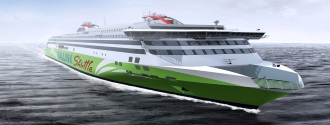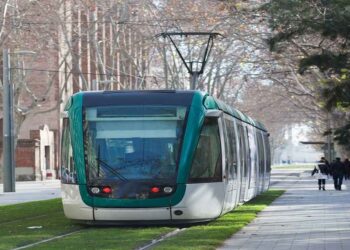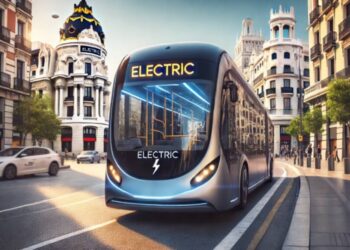Tallink’s new liquefied natural gas (LNG) fuelled fast ferry Megastar is being constructed by Meyer Turku shipyard. First steel for the vessel was cut in a ceremony held in August 2015, while keel-laying was held in February 2016. The ferry is expected to be delivered in early 2017.
Fuelled primarily by LNG, the vessel will comply with the new, stricter emission regulations for the emission control areas (ECAs), including the Baltic Sea. It will operate on the Tallinn (Estonia)-Helsinki (Finland) route under the Tallink’s service concept for fast ferries, Tallink Shuttle. The fast ferry was christened Megastar in January 2016.
The Megastar ferry will be classed by Bureau Veritas, whose subsidiary Tecnitas has performed the risk assessment studies for the LNG bunker operations in Helsinki and Tallinn ports and is currently performing hazard identification (HAZID) studies for the proposed LNG propulsion and storage on-board.
Financing Tallink’s LNG-powered fast ferry
The overall cost for the construction of the LNG-fuelled ferry is estimated to be €230m ($260m approximately). Nordea Bank Finland will arrange a 12-year loan of €184m ($208m approximately), 95% of which will be guaranteed by the Finnish export credit agency, Finnvera.
“The vessel will comply with the new, stricter emission regulations for the emission control areas (ECAs), including the Baltic Sea.”
Up to 20% of the total cost is expected to be paid during the construction period and the remaining following the delivery of the vessel.
Design of Tallink’s new fast ferry
The Megastar fast ferry will be 212m-long and have a gross tonnage of 49,000t. It will be capable of carrying 2,800 passengers and 300 crew members.
The vessel integrates an innovative hull design, which is expected to minimise the flow resistance and enable the ship to operate in icy-waters. The vessel is also designed to provide efficient and fast cargo turnaround in ports.
Propulsion details of the fast ferry
The vessel’s engine and propulsion machinery will include three 12-cylinder Wärtsilä 50DF and two six-cylinder Wärtsilä 50DF main engines, including two Wärtsilä fixed pitch propellers and propeller shaft lines. The propulsion system will provide the vessel a service speed of 27kt.
Contractors involved
ABB was contracted to supply the vessel’s entire electric power plant, electrical propulsion systems and an energy management solution. The delivery will comprise synchronous propulsion motors, ACS600SD drives, medium-voltage generators, the main switchboard, propulsion transformers, thruster motors, and its proprietary EMMA energy management system.
Stena Superfast X Ferry, UK
Stena Superfast X, a new fast Ro-Pax ferry, was launched at Dublin Port, for service between Holyhead and Dublin, in March 2015.
The vessel’s LNG fuel gas system consisting of two horizontal, vacuum-insulated 300m³ tank, will be supplied by Linde. The contract also entails the delivery of gas handling and control systems.
The roll-on / roll-off (RoRo) equipment, including a bow door, bow and stern doors, front and rampway doors, hoistable and movable ramps, lifting platform, stores hatches, doors for passengers, pilots and bunkering, and associated hydraulic power facilities will be supplied by MacGregor, a subsidiary of Cargotec.
The engineering and design works for the vessel’s heating, ventilation and air-conditioning (HVAC) systems will be performed by Sance in collaboration with Orsap.
Becker Marine Systems has been contracted to supply two of its proprietary TLKSR twisted leading-edge rudders with bulbs for the twin-screw ferry, to enhance its manoeuvrability.

































